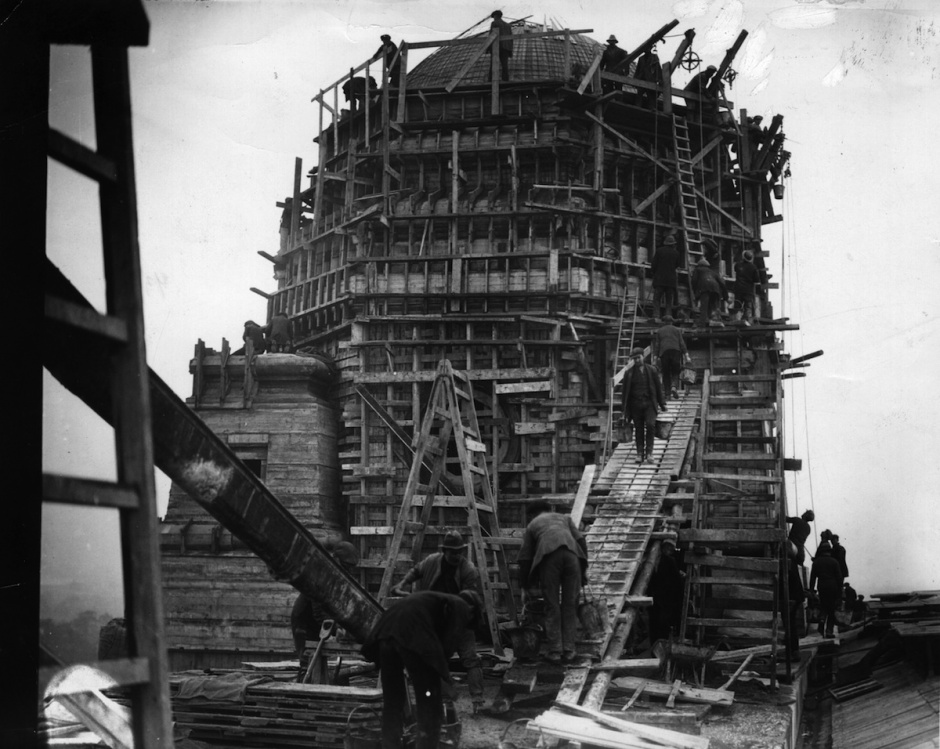Originating in 1856, The Engineer just missed the Great Exhibition of 1851 and Joseph Paxton’s great Crystal Palace that showed off the engineering and technological feats of the British Empire at its height, for good or ill. No doubt if the magazine’s founder had swung into action a few years earlier, the Crystal Palace would have had pride of place in its pages. And while we have sometimes been criticised for being too London-centric, the capital has throughout its history – and ours – been the natural location for some of the country’s greatest celebrations; and from the Coliseums and stadia of history onwards, the venues for great public happenings have been feats of engineering. Here, we collect some of the most notable engineering feats connected with celebrations and gatherings that have featured in our pages.

April 1923: the building of Wembley Stadium
The twin towers of Wembley, although in truth slightly stumpy, formed an iconic backdrop for many a sporting event and concerts including 1986’s Live Aid, not to mention the 1948 Olympic Games. In a five-page feature in 1923, The Engineer detailed the amazing six month project to clear the site in north London and build the stadium in time for that year’s FA Cup final, culminating in military exercises to test the new structure. By contrast, the stadium’s replacement took four years to build.
READ OUR REVISIT OF THE ORIGINAL PROJECT HERE
November 1949: planning the Festival of Britain
Timed to celebrate the centenary of Prince Albert’s Great Exhibition, the Festival of Britain was the foundation of London’s great arts complex on the South Bank of the Thames. But although arts hold sway on the site today, the festival focused on science, technology, engineering and industry. Our coverage of the planning of the event looked at both the engineering behind the structures, including the Dome of Discovery and the Skylon spire, neither of which now exist, and what was planned for the exhibits
READ OUR REVISIT OF THE ARTICLE HERE
September 2010: the Olympics velodrome
Bringing our coverage more up-to-date, the 2012 Olympics represented a series of engineering feats almost on our doorstep. Despite the difficulty of covering these projects – owing to the way the organising bodies tied up publicity to protect sponsors – we still wrote about some of the most striking and innovative structures. The velodrome, which was nominated for the Stirling Prize for Architecture in 2011, still dominates the skyline with his distinctive parabolic roof, and ensuring spectator sightlines while also maintaining the optimum conditions for cycle racing was a particular challenge, which we detailed in an interview with the architects and engineers behind the building.
READ OUR COVERAGE OF THE VELODROME PROJECT HERE
August 2012: Danny Boyle’s Olympics opening ceremony
Six years on from the London Olympics, the opening ceremony is still fondly remembered for its imaginative synthesis of Britain’s past through the Industrial Revolution, to the foundation of the National Health Service and display of pop culture Britain has brought to the world. The Engineer covered the hidden engineering that enabled the spectacle, its coordination and the many elements used to bring the ceremony to life.




Glasgow trial explores AR cues for autonomous road safety
They've ploughed into a few vulnerable road users in the past. Making that less likely will make it spectacularly easy to stop the traffic for...